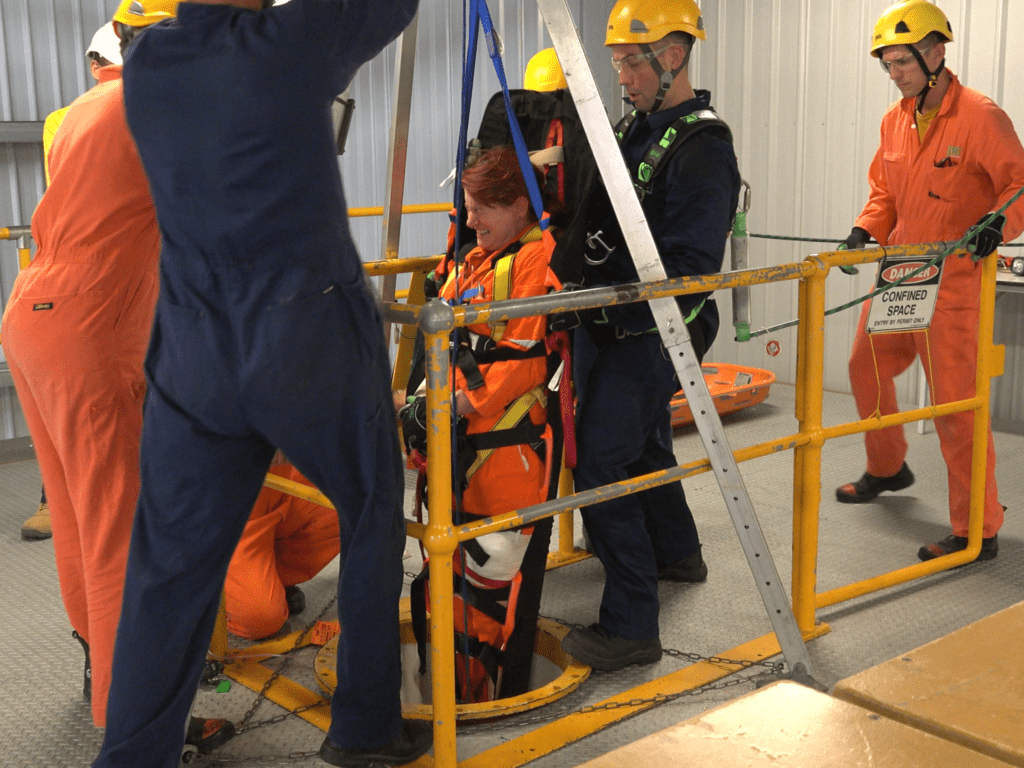
Please let us know if there are any issues that your Zokal trainer should be aware of. This is a competency based programme with progressive assessment throughout the course, including demonstration of written and oral questions relating to underpinning knowledge. PARTICIPANTS MUST BE ABLE TO COMMUNICATE IN ENGLISH, AND MUST BE ABLE TO FILL OUT ALL NECESSARY DOCUMENTATION. All other equipment used will be supplied by Zokal Safety Training. Students to bring own Gloves if they require them. Half Day Courses – Light refreshments will be provided at morning break (only on our premises) Dress: Participants are required to wear clean clothing appropriate for the workplace and covered shoes. Number of Participants: 10 Requirement: Provide Unique Student Identifier (USI number) and ID Equipment: All training materials are supplied by Zokal Safety Training Meals: Full Day Courses – Lunch will be provided and light refreshments will be provided at morning break (only on our premises). See Student handbook for additional information. It is recommended that participants contact Zokal prior to their course if they have any concerns about their ability to complete the training. It is recommended that participants provide evidence of their Foundation Skill Level prior to the commencement of the course. We provide a dynamic and interactve service in confined space safety. Industry Skills Councils have mapped this course to level 2/3 of the Australian Core Skills Framework. Rescue2 are not just a confined space rescue stand by team. Training conducted by experienced confined space and rescue specialists Course documentation Up to 24 hours classroom, practical training and assessment Prerequisites
 Initiating and conducting confined space rescues in a multiple of roles to successfully extract a victim using a number of entries and exits from a vessel. Relevant legislative and regulatory requirements. Procedures for reporting injuries and accidents. Administration of basic emergency life support. Capabilities and limitations of rescue equipment. Topics include and are not limited to all those covered in the 2 day course plus: Our rescue teams regularly practise technical rescue scenarios both in confined spaces, working at height and using rope access.
Initiating and conducting confined space rescues in a multiple of roles to successfully extract a victim using a number of entries and exits from a vessel. Relevant legislative and regulatory requirements. Procedures for reporting injuries and accidents. Administration of basic emergency life support. Capabilities and limitations of rescue equipment. Topics include and are not limited to all those covered in the 2 day course plus: Our rescue teams regularly practise technical rescue scenarios both in confined spaces, working at height and using rope access. 
This course provides the skills and knowledge required to enter confined spaces as part of an emergency rescue team, provide basic emergency life support in a challenging environment. This program covers a higher level of rescue in more complex confined space environments involving operator injury. This course covers the competency required to participate in rescue operations as a member of an emergency rescue team (ERT). This course is appropriate for those working in operational roles undertaking work in confined spaces (enclosed or partially enclosed) for the purpose of carrying out work or inspections and is also appropriate for those performing sentry or stand-by person roles.
HLTAID009 – Provide cardiopulmonary resuscitation. We know how it may not be ideal for every business to deploy their own rescue team that is comprised of their own employees. It is stated by OSHA 1910 146 that all permit-required confined space entry must deploy an on-site rescue team. MSMWHS216 – Operate Breathing Apparatus Rescue Solutions strives to keep your employees safe while they perform a permit-required confined space entry. RIIRIS201E – Conduct Local Risk Control. MSMPER200 – Work in accordance with an issued permit. RIIWHS202E – Enter and work in confined spaces. PUASAR025 – Undertake Confined Space Rescue. These risk assessments must consider all incidents that may occur within that confined space. If no risk assessment has been done, then risk assessments and method statements (RAMS) must be produced. CONFINED SPACE RESCUE TEAM KIT LSP Miller Full-Body Splint Sked Basic Rescue System CSR2 Pulley System ProSwivel 1.5 in PMP SS Swivel Pulleys (5). To determine the effectiveness of emergency arrangements, consideration must be given to previous risk assessments for that confined space. One provision of the standard requires employers to develop and implement procedures for summoning rescue or emergency services in permit-required confined. Be able to be put into operation immediately (you cannot rely on the public emergency services)įor emergency arrangements for rescue and resuscitation to be suitable and sufficient, they should cover:.  Require provision of resuscitation equipment (if it has been identified that persons may require resuscitation in an emergency).
Require provision of resuscitation equipment (if it has been identified that persons may require resuscitation in an emergency).  Minimise risk to those putting the arrangements into operation (statistically for every worker killed in a confined space, two “would be rescuers” are killed!). If people need to enter and work in confined spaces, it is a requirement of the Confined Spaces Regulations that an emergency plan (emergency arrangements) be developed for rescue of persons in the event of an emergency arising.
Minimise risk to those putting the arrangements into operation (statistically for every worker killed in a confined space, two “would be rescuers” are killed!). If people need to enter and work in confined spaces, it is a requirement of the Confined Spaces Regulations that an emergency plan (emergency arrangements) be developed for rescue of persons in the event of an emergency arising.








 0 kommentar(er)
0 kommentar(er)
